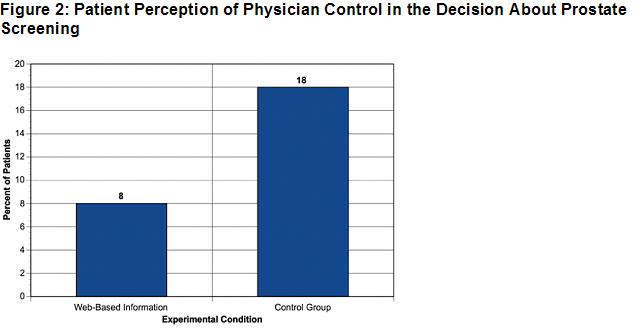Program Highlights
Program Materials
Preview materials
Program Scores
The Need
The Program
Time Required
Intended Audience
Suitable Settings
Required Resources
About the Study
Men aged 50 to 70 with a scheduled health maintenance examination at a large family practice were telephoned about 2 weeks prior to their appointment and invited to participate. Of the 497 participants who agreed to participate, 90% were Caucasian and 84% were college educated. The majority of the participants were also in the high socio-economic group. The participants were randomly assigned to receive the decision aid in either a Web-based or brochure format, or to a control condition in which participants received no information about the PSA test prior to their appointment.
Outcomes included patients' perception of their control over the decision regarding prostate cancer screening (i.e., locus of decisional control) and patients' knowledge of the risks and benefits of prostate screen procedures. All outcomes were measured by self-report in questionnaires filled out immediately after the examination appointment.
Key Findings
Exposure to either decision aid (i.e., Web page or brochure) prior to the examination visit increased patients' perceptions that they had the primary role in making the decision regarding the PSA test, when compared to patients in the control group. For example, 56% of patients who reviewed the informational Web page and 54% of patients who reviewed the informational brochure reported that they (rather than their physician) made the decision regarding screening (with or without carefully considering the advice of their physician), compared to only 46% of patients who did not receive information prior to their visit (p<.05 for each experimental condition, compared to the control group).

In addition, 8% of patients who reviewed the informational Web page reported that their physician (rather than the patient) had the primary role in making the decision regarding screening, compared to 18% of patients who did not receive information prior to their visit (p<.05). The difference between the informational brochure and control group patients was not statistically significant.

Exposure to either decision aid also increased patient knowledge regarding the risks and benefits of prostate cancer screening. The percentage of correct answers on the knowledge scale was 54% in the control group, compared to 69% in the Web-based group (p<.001) and 69% in the informational brochure group (p<.001).



